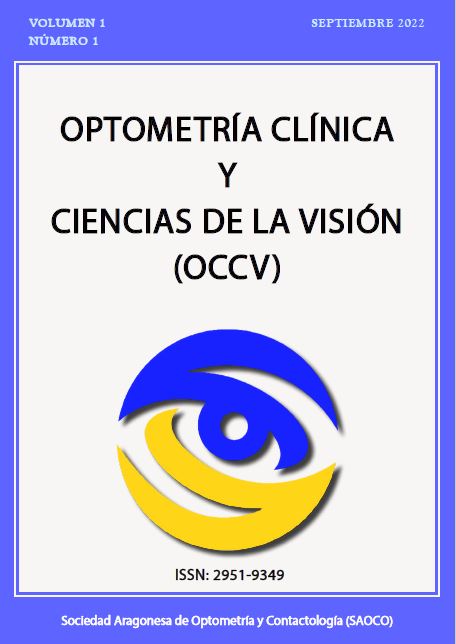Clinical Case Series: Irregular Cornea Contactology and for Myopia Control
Main Article Content
Abstract
Relevance: We may encounter cases in which superior knowledge in contactology is necessary. It is not usual, but that does not mean we should forget or stop learning in this branch of optics. Rigid contact lenses will help improve the patient's quality of life, causing as little damage as possible. In addition to the satisfaction obtained, when you restore good visual acuity to a post-LASIK or reduce daytime myopia for a teenager upset by her glasses.
Purpose: Good training in the use of contact lenses is essential to be able to deal with slightly more complicated cases that require our help. Being updated on this topic will make us better professionals than we are now and will give us greater prestige.
Case reports: The first clinical case is about a middle-aged man who, tired of wearing glasses and at the beginning of presbyopia, no longer wants to wear them, which is why he had surgery. Since the simple solution, soft contact lenses, does not work, rigid contact lenses are placed. Visual acuity improves considerably although carrying comfort is reduced. It is interesting how with the rigid lens we are able to provide good visual acuity in distance and near vision to our patient. In the second case, we can be proud that a teenager can do without her glasses at home and be happy again with their use outside the home, in addition to trying to slow down the growth of her ametropia, which, as we will see, can increase the probability of suffering from some ocular pathologies.
Conclusions: We can see two clear examples in which rigid contact lenses open up a large number of options to improve visual acuity and thus the quality of life of our patients. Not recycling ourselves on the subject of contactology may not provide the best solution to our patients' problems.
Article Details

This work is licensed under a Creative Commons Attribution-NonCommercial 4.0 International License.
How to Cite
References
Fadel D, Kramer E. Potential contraindications to scleral lens wear. Contact Lens Anterior Eye. 2019;42(1):92–103.
Holden BA, Fricke TR, Wilson DA, et al. Global Prevalence of Myopia and High Myopia and Temporal Trends from 2000 through 2050. Ophthalmology. 2016;123(5):1036-42
Bullimore MA, Brennan NA. Myopia Control: Why Each Diopter Matters. Optom Vis Sci 2019;1(1)
Baird PN, Saw SM, Lanca C, et al. Myopia. Nat Rev Dis Primers. 2020;6(1):99
Flitcroft DI. The complex interactions of retinal, optical and environmental factors in myopia aetiology. Prog Retin Eye Res. 2012;31(6):622-60
Cho P, Tan Q. Myopia and orthokeratology for myopia control. Clin Exp Optom. 2019;102(4):364-377
Walline JJ. Myopia Control: A Review. Eye Contact Lens. 2016;42(1):3-8
Hiraoka T, Sekine Y, Okamoto F, et al. Safety and efficacy following 10-years of overnight orthokeratology for myopia control. Ophthalmic Physiol Opt. 2018;38(3):281-289
Hughes RP, Vincent SJ, Read SA, et al. Higher order aberrations, refractive error development and myopia control: a review. Clin Exp Optom. 2020;103(1):68-85
Garrido J, Herrero S. Estudio de la comodidad, visión y facilidad de adaptación del nuevo diseño Gas Permeable BIAS: Resultados y conclusiones. Servicios profesionales Conóptica. 2008

